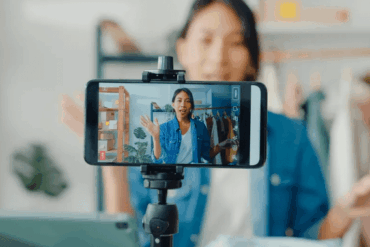By Rodney Mason,
Working with creators is no longer a bolt-on marketing tactic in digital commerce; creators are the strategy. As we move through the second half of 2025, I’m seeing three big creator-led trends transforming how consumers discover and how brands must respond to stay ahead. Whether it’s in store aisles or on TV screens, creator content has become a powerful driver of discovery, trust and conversion.
1. Creator-Generated Content Is The New Standard
User-generated content (UGC) was once the golden ticket to authenticity, but now, many consumers want trusted voices with taste, and that’s where creators shine. Research from Matter Communications found that 69% of consumers trust recommendations from creators, alongside those from family and friends, more than branded content.
Shoppers now expect a personalized experience that feels authentic, relatable and tailored to their preferences. And creators are delivering.
Creator content is also extending beyond digital. According to our recent study (download required), three in four consumers want to see creator content while they shop. They’re engaging with creator content at nearly every step of the path to purchase, even inside the store. A staggering 92% of our platform users say they’ve made an in-store purchase based on a creator’s video, and they would prefer to engage with creator content in four key ways while shopping in store: looking up content on social media, checking brand websites in real time, scanning QR codes and viewing content on in-store tablets or signage.
For brands, this means that integrating creator content into the full shopping journey, both online and offline, is no longer optional. It’s essential. Start by partnering with creators who authentically align with your audience, and then map their content to key decision moments like trending videos to spark discovery or a product demo in-person to bridge the gap between online and offline.
2. Bigger Screens, Bigger Impact
A Pew Research Center study found that 83% of U.S. adults are now using streaming services, and a study by Shopsense AI and EMARKETER found that after being inspired by something on TV, almost three-fourths of viewers (registration required) search online and consider a purchase, make a purchase or do both.
As streaming platforms are becoming storefronts, creators can play a significant role in messaging. According to a Deloitte study, 49% of Gen-Z and 40% of Millennial consumers say they want to see their favourite online creators in TV shows and movies.
Sixty-one percent of our platform users report being influenced by trends they see on streaming shows, and then searching for and purchasing those items through creators. The connection between entertainment and commerce is accelerating, and creators are the bridge.
This shift presents a massive opportunity for brands: Integrating creator-led content into streaming and connected TV not only boosts visibility but also can build deeper emotional connections. As Gen-Zers increasingly rely on creators for recommendations, integrating creators into what they’re watching feels more like a natural extension of entertainment than an ad, and that’s where the magic happens.
To successfully integrate creator-led content into streaming and connected TV (CTV), start by identifying top-performing creators and content for your brand or category.
Once you’ve partnered with a creator, don’t script the CTV spots. Instead, provide a brief that includes front- and back-end branded bumpers delivering the opening and closing, and allow the creator to deliver their message in their own voice, similar to their top-performing content. Or pull their top-performing content directly and edit it down into the spot format.
Once the spot is complete, align CTV to your audiences with characteristics similar to the creator’s followers.
Establish a clear window with no CTV in advance of airing the spot for a period of time equivalent to the time the spot will run, and also provide a clear window with no spots for the same length of time as the CTV air dates. Compare performance during the run and the next period for engagement versus the initial clear window period.
3. Welcome To The Era Of ‘Me Media’
Today’s consumers aren’t just looking for inspiration; they’re looking for themselves in the content they consume. We found that 67% of our platform users return to search for the same creators again and again. Why? Because those creators reflect their style, preferences and even their zip code.
This hyper-personalized, identity-driven behaviour is fuelling what can be called the rise of “me media”: content that reflects each consumer’s personal style, values and daily life.
The connection between consumers and creators is increasingly local as well: 58% of Gen-Z consumers trust gift recommendations from local or micro-influencers.
The takeaway here? Relatability has become the new reach.
What All This Means For Brands
Brands that want to win in the second half of 2025 need to do more than just work with creators. They need to build and scale with creators, and embed them across multiple consumer touchpoints—from creator collaboration campaigns to digital and social ads, streaming and CTV, audio and retail media network channels and in-store merchandising.
To do that, start identifying all touchpoints and assets across your complete customer journey. Then, work with creators to develop messaging to test in collaboration campaigns. Identify which creators and messages generate the best response and engagement. Once you’ve identified the top performers, go back to those creators to expand the winning content across the customer journey in the correct formats and length, with the right messaging.
As we enter the busiest retail months of the year, creators aren’t just influencing what’s trending. They are the trend.
Feature image credit: Getty
By Rodney Mason
Find Rodney Mason on LinkedIn and X. Visit Rodney’s website.


